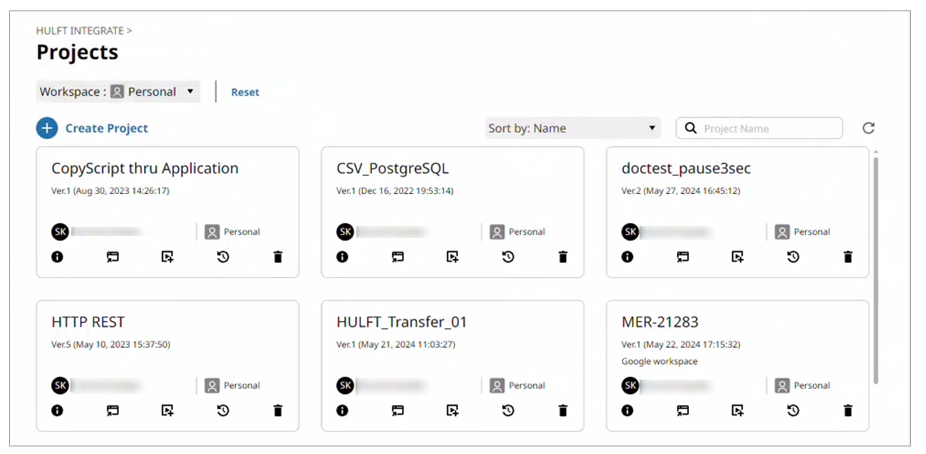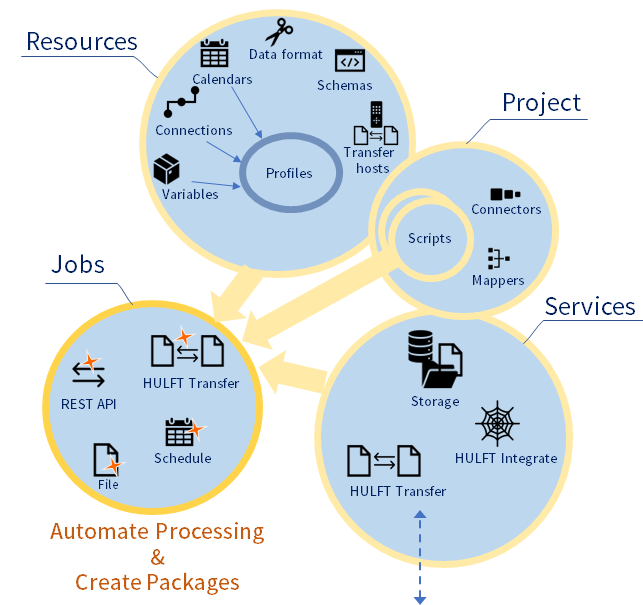Key concepts of HULFT Square
HULFT Square is composed of various elements. The figure shown below depicts the relationship between elements.

Figure 1.7 The relationship of the elements
The following sections outline each element.
A service provides a server function that enables users to store data or to perform operations such as data transfer and data integration operations.
Types of services
For HULFT Square, the following services are available:
-
Storage
-
HULFT Integrate
-
HULFT Transfer
-
HULFT Transfer App
-
SFTP
-
VPN
-
FTP
Permissions for use of services
When you set services, you can set which user can use the services. Create groups such as for production and for development, and assign one or more groups.
Resources
A resource represents a set of configurations for an element used on HULFT Square.
The following elements are called resources, and they can be set in HULFT INTEGRATE, HULFT TRANSFER, and HULFT Transfer App:
-
Connections
-
Data Formats
-
Variables
-
Schemas
-
Calendars
-
Receive Config
-
Send Config
-
Host Info
-
Host Group Info
A project is used to manage one or more related Data Integration scripts.
On the Projects page, you can view information such as the project name, version (updated date and time), creator of the project, and workspace name.

Scripts represent the flows of a series of ETL processes. In the flows, you can specify instructions, such as extracting necessary data from a data source, transforming the data into another format, and loading the data into a target destination system.
To write scripts, you need to create a project first and open Designer for the project.
A script can call other scripts. The scripts that are being called are the child scripts and the script that calls the child scripts is the parent script. The child scripts can be called from the same project or other projects.
Profiles are used to manage the resource configuration for projects. Though a default profile is provided, you can create profiles for specific purposes and use the profiles to switch configuration among execution environments. For example, among environments for development, testing, and production, you can easily switch the resources to use by changing profiles. For details, refer to Use a single application for both the development environment and production environment by switching over the profile and settings.
Content of profiles
A profile contains the configuration settings for the following resources that are required for a project:
-
Connections
-
Variables
-
Calendars
Projects refer to external configurations such as connections used within scripts. The dependency information is defined as a profile.
As shown in Figure 1.8 , a job is a package that contains a project and its related services and resources.
In HULFT Square, the following jobs can be set as triggers to execute Data Integration scripts.
-
File Event Jobs
-
REST API Jobs
-
Schedule Jobs
-
HULFT Transfer Jobs
For example, events such as creation or update of files, arrival of scheduled times, HTTP requests, or receiving files from HULFT can invoke Data Integration script execution.
